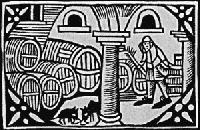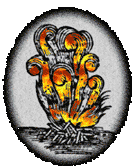THANKSGIVING DAY USA (4TH THURSDAY IN NOVEMBER)
What do people do?
Thanksgiving Day is traditionally a day for families and friends to get together for a special meal. The meal often includes a turkey, stuffing, potatoes, cranberry sauce, gravy, pumpkin pie, and vegetables. Thanksgiving Day is a time for many people to give thanks for what they have.Thanksgiving Day parades are held in some cities and towns on or around Thanksgiving Day. Some parades or festivities also mark the opening of the Christmas shopping season. Some people have a four-day weekend so it is a popular time for trips and to visit family and friends.
Public life
Most government offices, businesses, schools and other organizations are closed on Thanksgiving Day. Many offices and businesses allow staff to have a four-day weekend so these offices and businesses are also closed on the Friday after Thanksgiving Day. Public transit systems do not usually operate on their regular timetables.Thanksgiving Day it is one of the busiest periods for travel in the USA. This can cause congestion and overcrowding. Seasonal parades and busy football games can cause disruption to local traffic.
Background
Thanksgiving Day has been an annual holiday in the United States since 1863. Not everyone sees Thanksgiving Day as a cause for celebration. Each year since 1970, a group of Native Americans and their supporters have staged a protest for a National Day of Mourning at Plymouth Rock in Plymouth, Massachusetts on Thanksgiving Day. American Indian Heritage Day is also observed at this time of the year.There are claims that the first Thanksgiving Day was held in the city of El Paso, Texas in 1598. Another early event was held in 1619 in the Virginia Colony. Many people trace the origins of the modern Thanksgiving Day to the harvest celebration that the Pilgrims held in Plymouth, Massachusetts in 1621. However, their first true thanksgiving was in 1623, when they gave thanks for rain that ended a drought. These early thanksgivings took the form of a special church service, rather than a feast.
In the second half of the 1600s, thanksgivings after the harvest became more common and started to become annual events. However, it was celebrated on different days in different communities and in some places there were more than one thanksgiving each year. George Washington, the first president of the United States, proclaimed the first national Thanksgiving Day in 1789.




 To
carry out their plan,
To
carry out their plan,  Soon, people began placing effigies onto bonfires, and fireworks were added
to the celebrations. Effigies of Guy Fawkes, and sometimes those of the Pope,
graced the pyres. Still today, some communities throw dummies of both Guy Fawkes
and the Pope on the bonfire (and even those of a contemporary politician or
two), although the gesture is seen by most as a quirky tradition, rather than an
expression of hostility towards the Pope.
Soon, people began placing effigies onto bonfires, and fireworks were added
to the celebrations. Effigies of Guy Fawkes, and sometimes those of the Pope,
graced the pyres. Still today, some communities throw dummies of both Guy Fawkes
and the Pope on the bonfire (and even those of a contemporary politician or
two), although the gesture is seen by most as a quirky tradition, rather than an
expression of hostility towards the Pope.